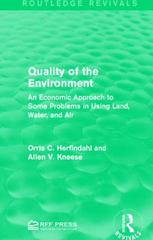Question
1. (10) Briefly discuss the following statements (keep your answers short and concise): (a) The consumption-based capital asset pricing model is inconsistent with high volatility
1. (10) Briefly discuss the following statements (keep your answers short and concise):
(a) The consumption-based capital asset pricing model is inconsistent with high volatility of stock prices.
(b) In standard real business cycle models, the MPK is highly procyclical. This implies that interest
rates (i.e. real) will be as well.
2. (20) An economy is populated by identical, innitely-lived agents (there is no population growth) that
maximize the present discounted value of lifetime utility given by
X1
t=0
t
ln ct
; 2 (0; 1)
where ct denotes consumption. Output is produced via a standard Cobb-Douglas production function:
yt = k
t
where kt denotes the beginning of period capital stock. (Implicitly it is assumed that labor supply is
inelastically supplied by households to rms and that the labor input has been normalized to unity.
Hence the labor market is ignored in this analysis.) In addition to consumption, households choose
investment. This produces next periods capital stock using the following production function:
kt+1 = k
t
t
i
1t
t
where t denotes a stochastic depreciation factor. It is assumed that this shock, the only source of
uncertainty in the economy, is an i:i:d: random variable. Given this environment, do the following:
(a) Solve for the recursive competitive equilibrium by solving the associated social planners problem. In
setting up the dynamic programming problem, use two constraints: the typical resource constraint
and the capital production constraint. Denote the Lagrange multiplier on the budget constraint as
t while the Lagrange multiplier on the capital production constraint is given by the product of tqt
where qt
is the shadow price of capital (in terms of consumption).
(b) Derive the associated Euler equations for the social planner problem. Give an intuitive explanation
for the determination of qt
:
(c) Dene and solve for the recursive competitive equilibrium in this economy. (Note: This is simplied
by rst using output (yt) as a state variable and then employing the guess and verify solution
method.)
(d) Give an intuitive explanation for the behavior of consumption and investment in this economy.
3. Consider a standard Solow growth model that is augmented with labor migration. As is typical, the aggregate production function is given by Y = (AL) K1 where Y is output, A is eectiveness of labor, L is labor, and K is capital. Also, as is typical, the law of motion for aggregate physical capital is given by K_ = sY K where K_ = dK=dt; s is the savings rate and is the depreciation rate. The eectiveness of labor grows at the constant rate of g : A_ = gA. In addition to population growth (given by the rate n), the country experiences migration M so that L_ = (nL + M): Migrants bring no physical capital and assume that the migration rate is positively related to the capital per worker. In particular, assume that the migration rate m = M=L is given by m = b log (1 + k) where b > 0 and k = K= (AL) is the capital per eective units of labor. Given this, do the following: (a) Derive the expression for _k in this economy. Compare this to the expression in the standard Solow model.
(b) As in the standard Solow model, analyze graphically the behavior of the economy in a graph with k on the horizontal axis. Let k denote the balanced growth path level of k and compare k in the economy with migration to that in the standard Solow model.
(c) Analyze using a phase diagram the stability properties of the balanced growth path for the case with migration. (d) Linearize the _k function around the balanced growth path, dene the speed of convergence of the economy to its steady-state and calculate it. Compare the speed of convergence in this economy to that in the standard Solow model
Step by Step Solution
There are 3 Steps involved in it
Step: 1

Get Instant Access to Expert-Tailored Solutions
See step-by-step solutions with expert insights and AI powered tools for academic success
Step: 2

Step: 3

Ace Your Homework with AI
Get the answers you need in no time with our AI-driven, step-by-step assistance
Get Started


